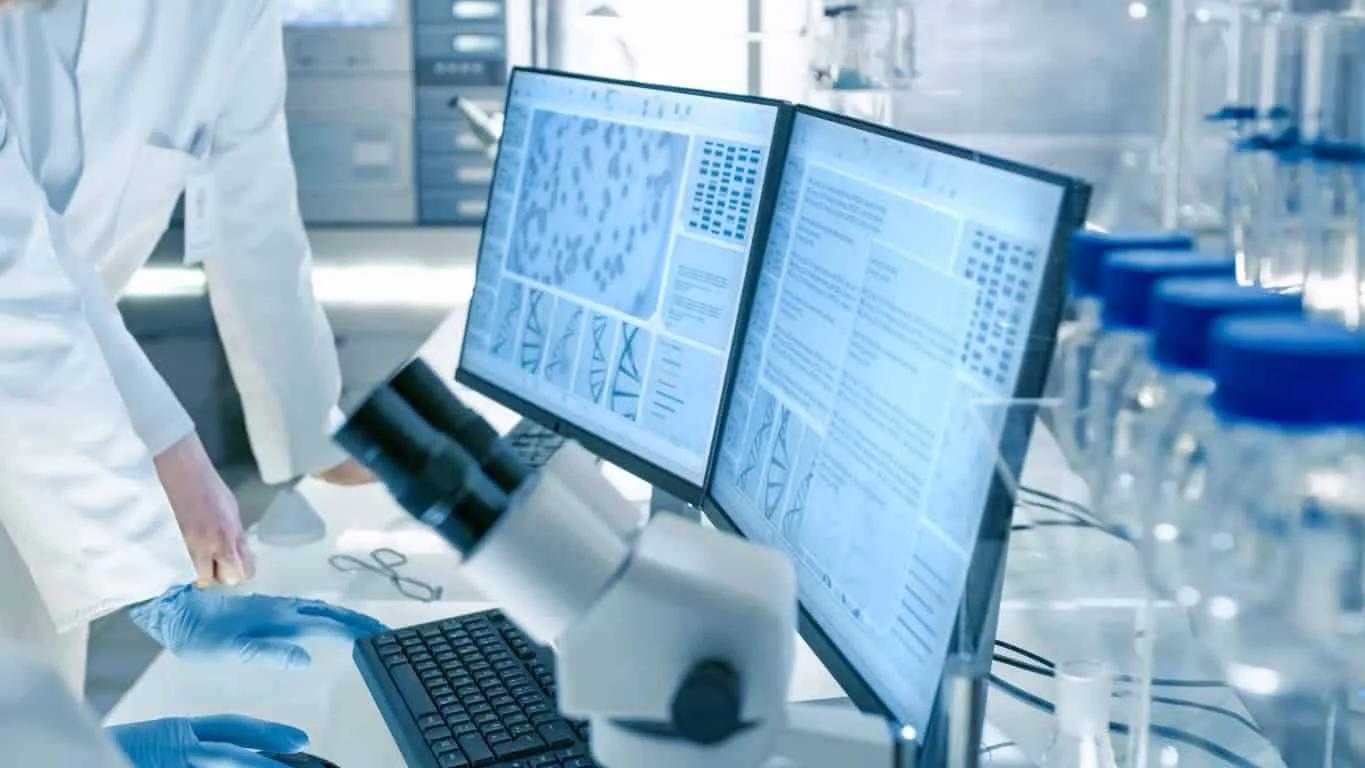Technology
- Home
- Technology
- News
How these guitar modeling companies are recreating rare vintage sounds for the digital age
Around 2009, Dweezil Zappa ran into a space problem. He was busy touring the US, performing some songs written by his father, Frank. Recreating those signature âpeculiar sounds,â as Zappa calls them, required lugging around a massive rig â roughly the s…

Published 8 months ago on Apr 12th 2025, 2:00 pm
By Web Desk

Around 2009, Dweezil Zappa ran into a space problem. He was busy touring the US, performing some songs written by his father, Frank. Recreating those signature “peculiar sounds,” as Zappa calls them, required lugging around a massive rig — roughly the size of two large refrigerators — held together by more than 200 connections and cables.
“The challenge for me on tour was how can I recreate some of these sounds and not use the actual equipment that [Frank] used because some of it didn’t exist anymore,” Zappa says. “It was a pretty extensive system.”
Zappa began seriously exploring a still relatively new technology: guitar amp modelers. These briefcase-sized devices aimed to capture the essence of analog amplifier and pedal sounds, reinterpret them digitally, and deliver them with an audio fidelity comparable to the real thing. Zappa realized modelers were more than just a space-saver: they also opened up a new dimension of creativity. With the right tweaking, Zappa says he suddenly had almost any sound or effect he could imagine at his disposal.
“If I have to switch to another song [during a set] that is from 1981, I just step on a button,” Zappa says. “It’s like having a recording studio, the entire chain of the recording, at your feet.”
The world of digital or “simulated” amplifiers can generally be divided into two categories: amp profilers and amp modelers. Profilers capture an audio snapshot of a guitar rig’s sound and convert it into code, allowing the tone to be reproduced without the physical rig present. These profilers can be played through an actual amplifier or, more commonly, through a speaker system. Modelers, by contrast, analyze the tonal characteristics of an amp at a granular level and digitally replicate each of its individual components. This process simulates nearly every tube, preamp, and transformer, creating a fully digital “twin” made up of ones and zeros.
In both cases, the goal is to take an instrument’s signal, convert it into a digital format, and process it through the digital amp, adding tonal complexity and richness. While they may not be exact copies of their analog counterparts, most people — aside from professional musicians and audio engineers — won’t be able to tell the difference, especially in a live setting.
The hardware in these devices varies widely, but mostly consists of digital signal processing (DSP) chips and integrated circuits. Devices employ specialized algorithms designed to replicate the sound and behavior of various amplifiers and effects. Audio processing tools, such as waveshapers, manipulate waveforms to recreate the breakup that occurs in analog amplifiers when vacuum tubes are overdriven. In traditional analog amps, this physical process generates distortion, a defining characteristic that shapes an amp’s unique tonal qualities. Modelers replicate this effect by introducing audio clipping through digitally manipulated sound waves, effectively mimicking the distortion found in analog circuits.
Rapid innovation and competition in amp modeling technology over the past decade have made it a staple in modern recorded music. Modelers are also becoming increasingly common in live performances — a shift industry experts speaking with The Verge attribute to heavier touring schedules and growing acceptance among veteran guitarists.
Generations of emerging musicians may never actually play through a “real” tube amplifier. With modelers, these artists can experiment with digital recreations of vintage or rare sounds they might otherwise never have access to. In some cases, amp modelers may even allow the most obscure pieces of music equipment to live on digitally, long after the original parts and possibly the people who know how to maintain them, disappear.
The space is mostly dominated by products from Fractal Audio Systems, Line 6, Neural DSP, and Kemper. Neural DSP says it uses a robotic operator armed with a microphone to take audio recordings of incrementally adjusted gear, then processes that data through an audio interface and presents it to users as digital amp and effects presets. Neural DSP’s Quad Cortex device also has a “capture” function that allows musicians to connect their own analog setup and create a convincing digital replica within minutes. Fractal Audio, whose modeler Zappa uses, uses schematics and blueprints of analog amps to create digital versions of individual components like transformers and tubes. The ultimate goal, Fractal Audio’s director of corporate development Matt Picone says, is to build “virtual gear” that performs almost identically to its analog inspiration.
For most non-musicians, the difference in audio fidelity between an analog amp and a modeler is imperceptible — and has been for several years. Where modelers have fallen short, at least for some musicians, is when trying to imitate the more difficult to pin down “feel” of their tube predecessors. Feel broadly refers to both the physical sensation of air being pushed through amplifiers into a jam-packed room, as well as the precision and immediacy of a player hitting a note and getting instantaneous feedback. Modelers, like any digital technology, introduce latency. Even a millisecond of latency can be enough to impact an advanced player’s connection with their instrument.
“The goal with any system is to get the latency as low as possible so that the perceived experience is that of a physical rig,” Cooper Carter, a professional musician and production consultant who has helped lock digital guitar sounds for major artists like Metallica, Journey, and Def Leppard, tells The Verge. “In an analog environment, it’s literally operating at the speed of electrons moving through copper.”
Some, who Carter and others refer to as “tone purists,” argue modelers, sophisticated though they may be, still lack a quintessential human quality. Dave Friedman, a veteran amp designer who has helped craft custom equipment for guitarists like Eddie Van Halen and Jerry Cantrell, summed up that tension during a 2020 interview with guitar YouTuber Rhett Shull. Friedman acknowledged modelers are a “great tool” and can obtain good tones, but said he worried they allowed for less interaction between the performer and the amplifier.
“There’s an impact that the real thing has that the modeler doesn’t have,” Friedman said. “There’s no danger left.”
But Zappa and Carter both said the newest generation of advanced modelers deliver in terms of audio fidelity, realism, and feel. Zappa is currently using a modeler during live performances on a Jimi Hendrix tribute tour. Those improvements, Carter notes, are partly why many of those “tone purists” are finally coming around to the technology.
“We’ve reached the point now where even the best players in the world, when presented with their rig that they’ve toured with for 40 years and the modeler, many of them end up preferring the modeler, not only because of how it sounds, but also because of what it offers as far as creative freedom,” Carter says.
Both Carter and Zappa, it’s worth noting, still have a fondness for classic tube amps. Carter compares it to an old muscle car versus a new EV. The former is beautiful and nostalgic, but not necessarily the best daily tool.
”It’s rock and roll, but [tube amps] are susceptible to damage,” Carter sats. “They are heavy as shit [and] expensive. They are kind of one-trick ponies or, at the most, like three-trick ponies.”
But there are other more practical reasons for the transition. Carter says the recent uptick in modelers, especially in live performance settings, has coincided with the music industry’s growing emphasis on touring. Artists of all sizes are traveling more than ever, and one of the biggest expenses, Carter notes, is transporting gear. That gets real expensive, real fast.
“Every major tour that’s switched to [modelers] has saved a lot of money on cartage,” Carter said.
Modelers are also far less finicky and prone to breaking than cumbersome mounds of analog gear. Individual components in tube amps can easily get rattled and broken during transport, which can result in slightly varying sounds from day to day. They are also susceptible to the elements, something Metallica reportedly found out firsthand during the band’s 2013 Freeze ‘Em All concert in Antarctica. That performance, according to Guitar World, was conducted using solar power that did not provide enough energy to power the band’s traditional full rig — but it was enough power for a Fractal amp modeler. Now, more than a decade later, Metallica lead guitarist Kirk Hammett still uses a variation of that same modeler.
“I have a studio quality sound in my Fractal,” Hammet told music YouTuber Rick Beato. “Album quality sound. That’s a hard thing to do.”
Veteran touring musicians aren’t the only ones benefiting from the vintage tones captured in modern modelers. Newer artists — many of whom could never afford a rare vintage Fender amp from the 1970s — can now experience a close replica of that sound simply by plugging their guitar into a modeler. Carter says that’s possible, in part, because amp companies can’t patent or trademark a particular sound. Modeler companies have taken advantage of this, creating close digital recreations of classic amps with slightly altered names that clearly pay homage to their analog ancestors. The result: new artists can preserve and carry forward the iconic sounds of the past, even as the original gear that produced them fades into obscurity.
India’s economy grows 8.2pc y/y in second quarter, beats forecasts
- 15 hours ago

Bill Belichick's legacy takes a detour at North Carolina
- 3 hours ago
Romania’s Defence Minister steps down after CV misrepresentation
- 15 hours ago
Iran to boycott 2026 World Cup draw over US visa row
- 11 hours ago
Religious scholar, minor son shot dead in Peshawar
- 10 hours ago

Kisspeptin-10: A multifaceted peptide with expanding research horizons
- 18 hours ago

Inside Lions DE Aidan Hutchinson's contract extension, and Micah Parsons' role
- 3 hours ago

WWE 'Raw' takeaways: Doubt looms around Survivor Series: War Games favorites
- 3 hours ago

Gen Z made status symbols affordable. They’re just impossible to get.
- 2 hours ago
Meta introduces nickname feature for posts in Facebook groups
- 11 hours ago
WHO issues unprecedented global guidelines to combat infertility
- 15 hours ago
Indian Minister’s statement threat to regional peace: FO
- 12 hours ago
You May Like
Trending











